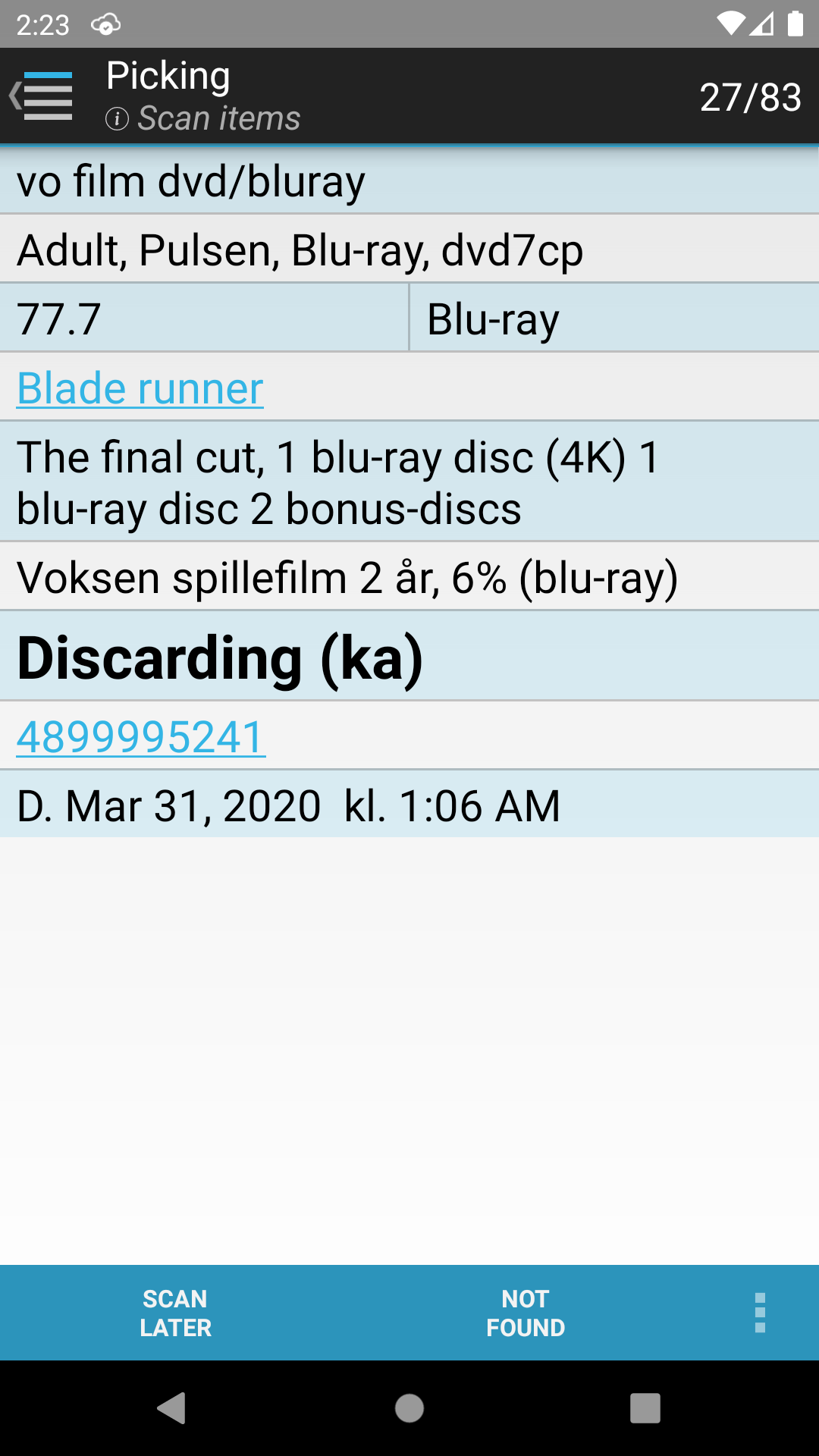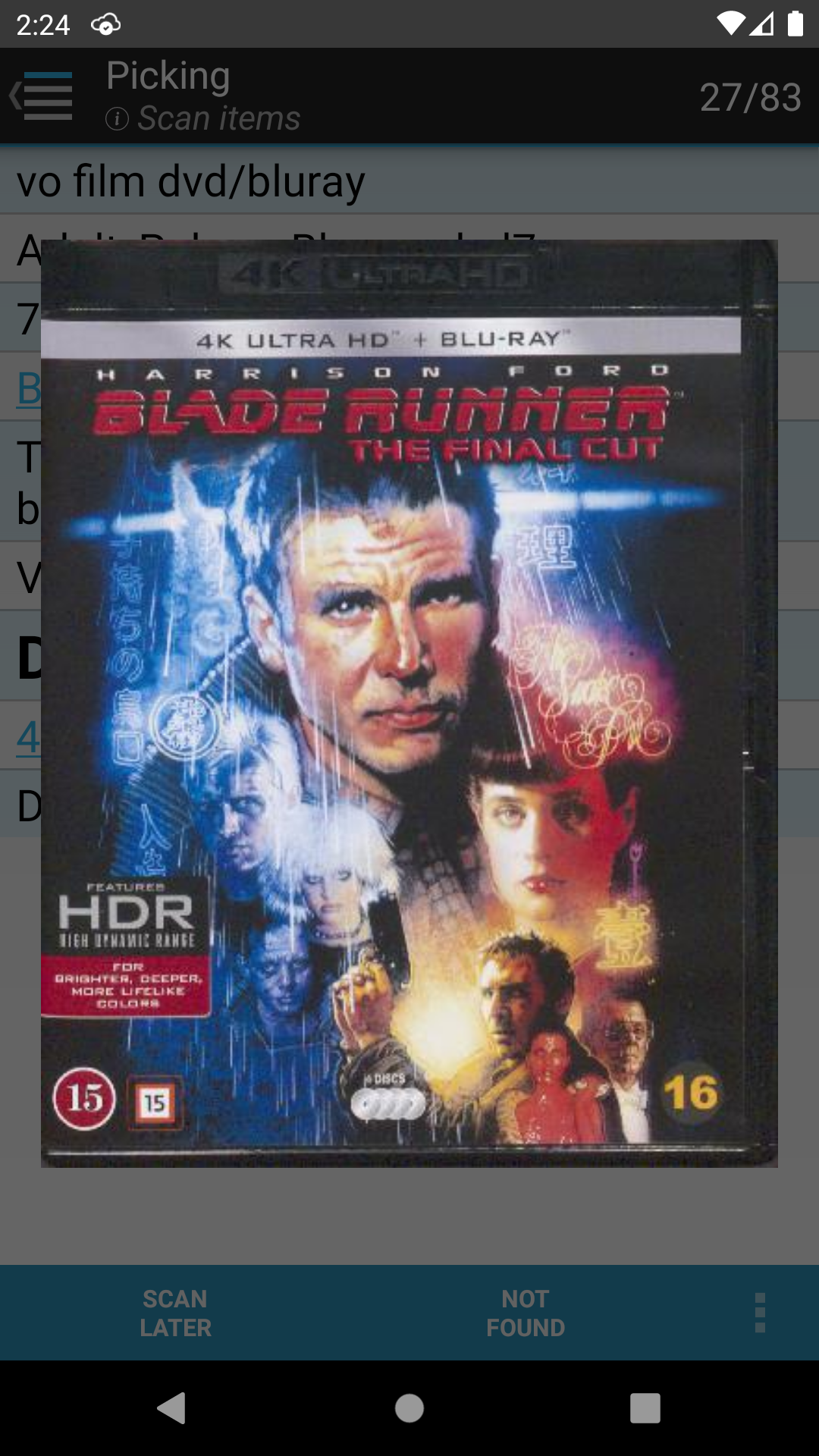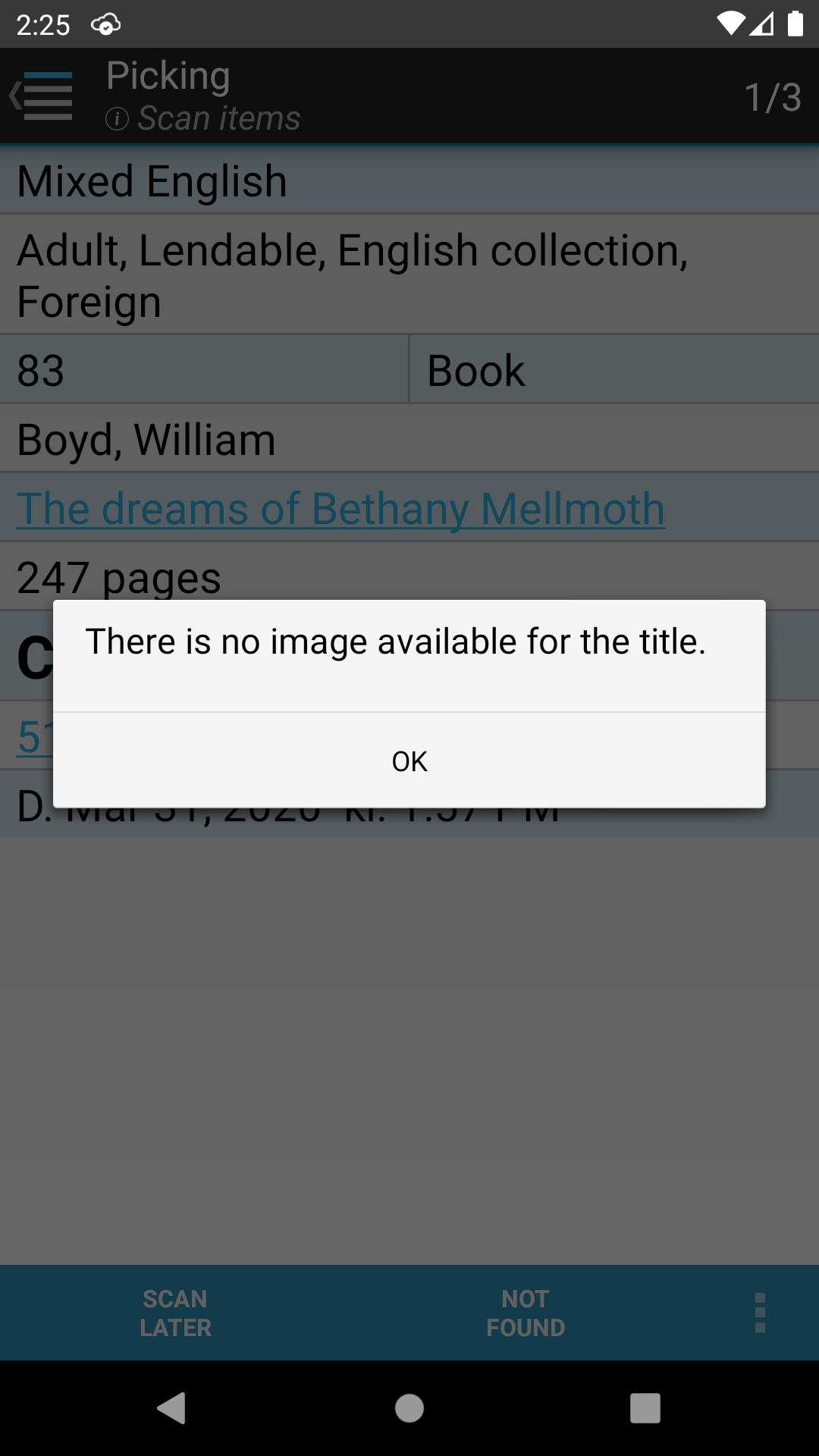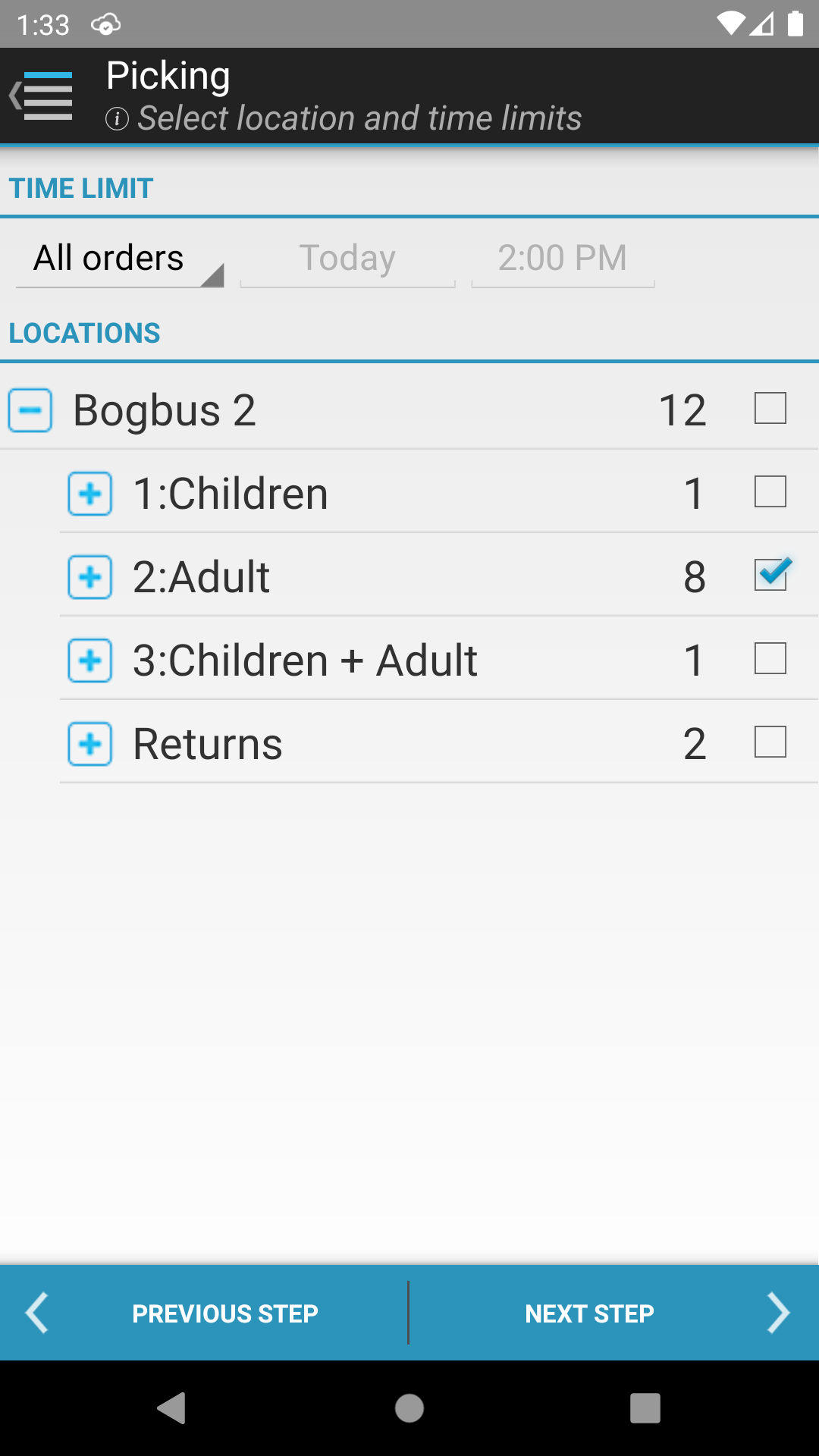
| Front page › Mobile client › Menu › Picking › Select location and time limits | Search | Version: 2.9.3 |
Select the locations the pick orders should be picked from and the time limit that should apply to the orders (click on the date or time to change this). Once the locations and time limit have been selected, click on “Next step” to proceed.
Possible choices for the time limit are:
If there are items that have been directly or indirectly located at the root of the branch, up to 4 options will be displayed under the root of the branch. These can each be checked separately:

A number of transport units should be scanned depending on the destination of the pick orders. The list of transport units that need to be scanned is displayed on the screen. The number of orders for each destination is displayed. Discard orders just involve discards and therefore require no transport unit.
A transport unit can be changed or rescanned by clicking on the line. Once all labels are scanned, the picking begins automatically.
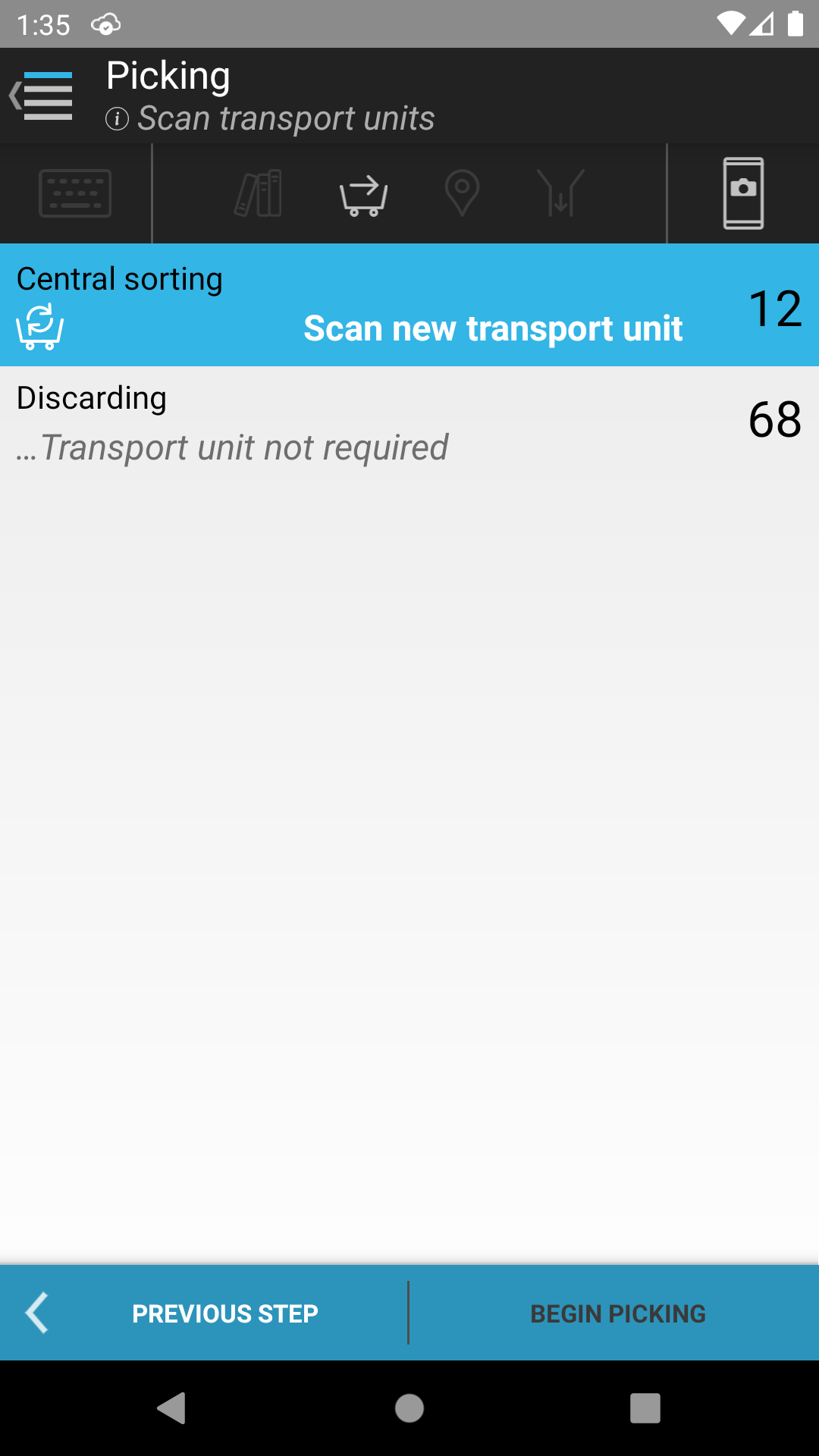
Transport units used for picking are automatically moved to the branch if they have not already been registered for the branch.
Once the pick orders have been specified and generated, they are displayed on the screen
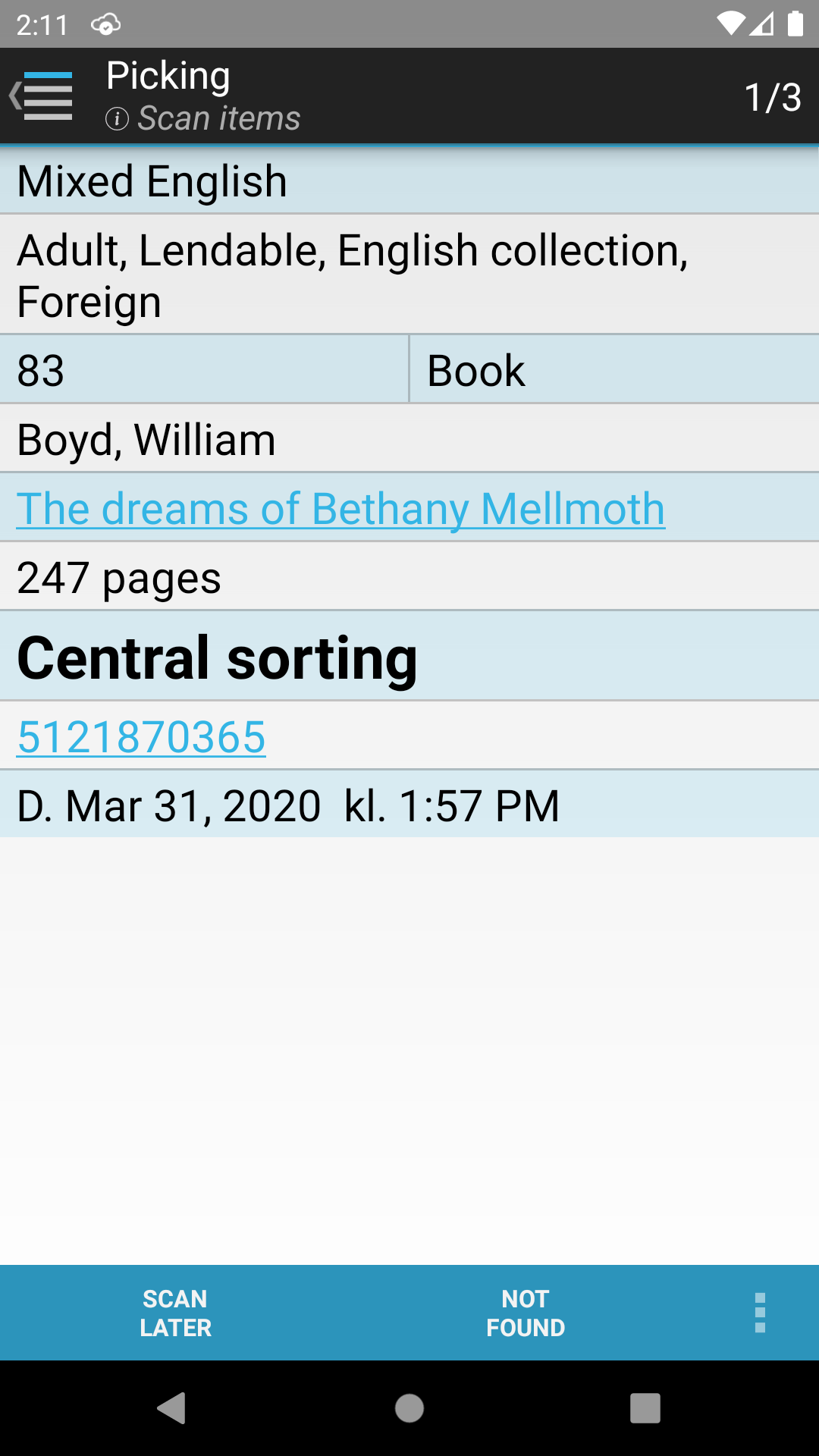
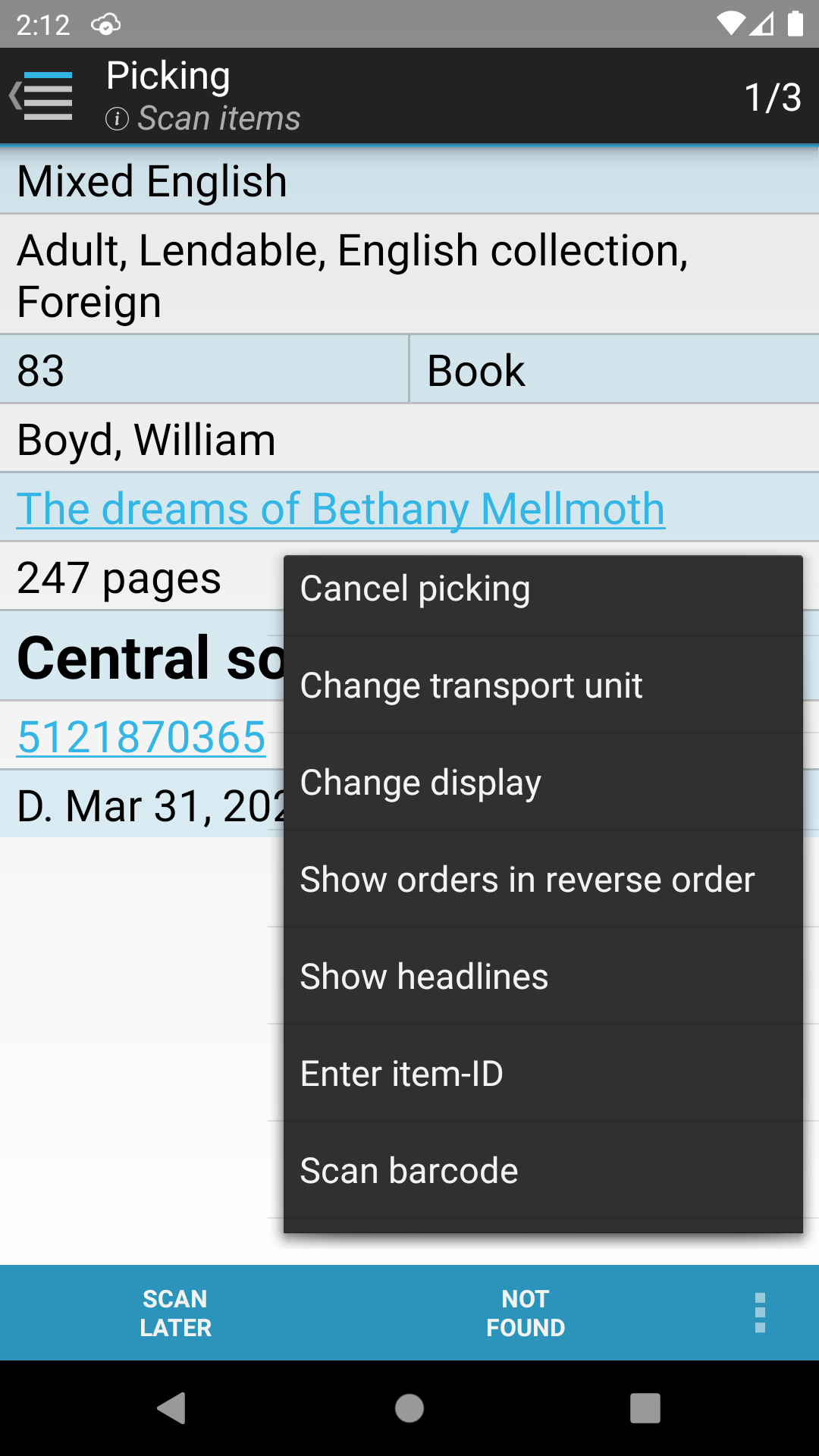
The menu provides the following options:
If “Change display” is selected, the screen appears as shown below.
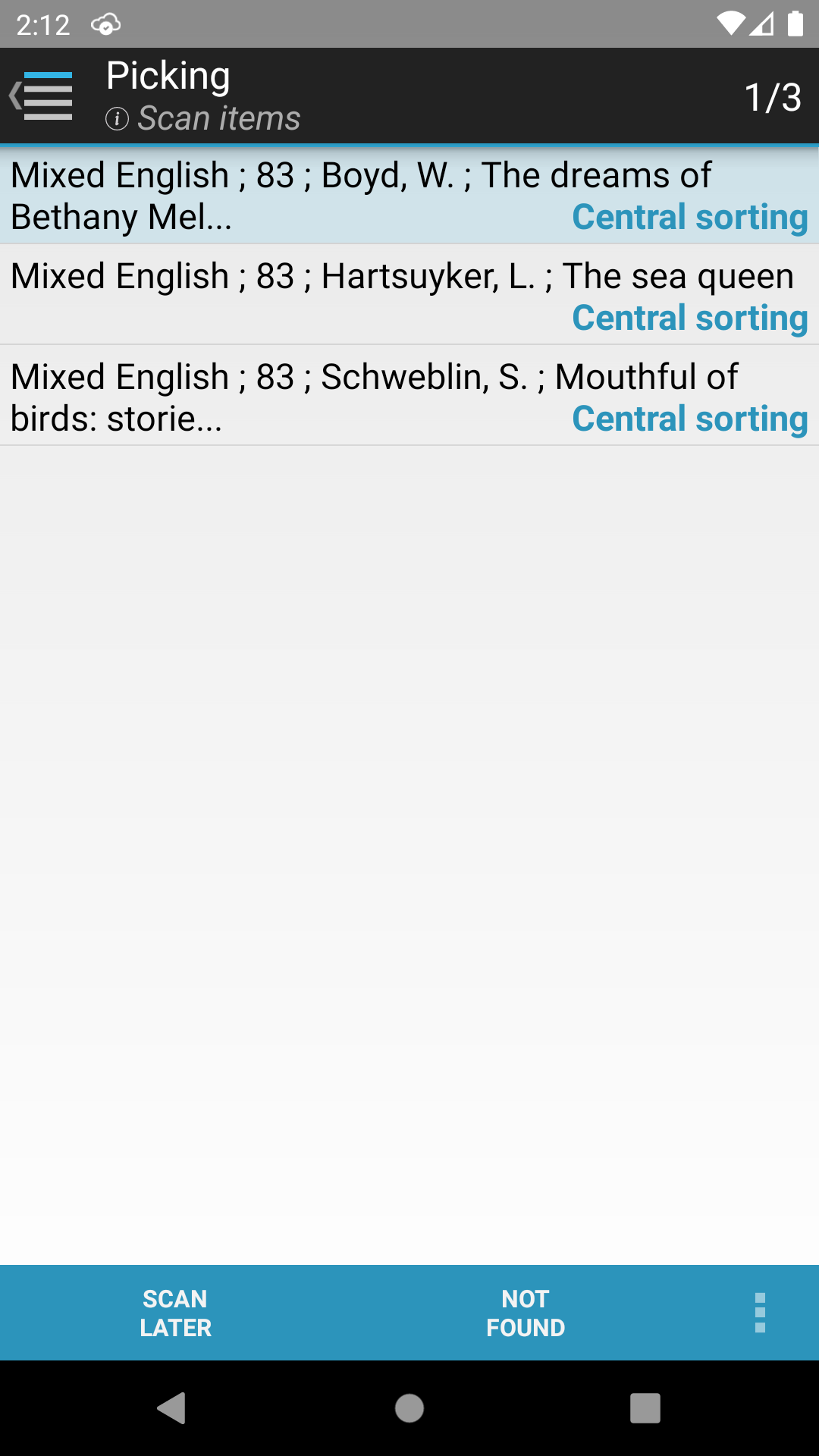
Once an item is located, it can either be scanned immediately, so that it is checked off on the list as processed or be scanned later by clicking on the “Scan later” button. If “Scan later” is clicked, the fact that the pick order should be displayed as processed is only noted on the mobile unit. The order’s processing does not get registered in IMMS.
If the item cannot be located, click on “Not found”. This discards all copies of the item at the applicable placement from the order.
At the top of the display screen, the number of the current order and the overall number of orders is listed (for example, “1/3” stands for order number 1 out of 3 orders). Since the orders are automatically updated continuously, both of these numbers can change if the order is added to, deleted, or updated.
If new orders arrive, where the destination does not match the transport units that were connected before picking started, you will be asked to connect a new transport unit when the new order is scanned. The transport unit is changed via the “Change transport unit” menu item.
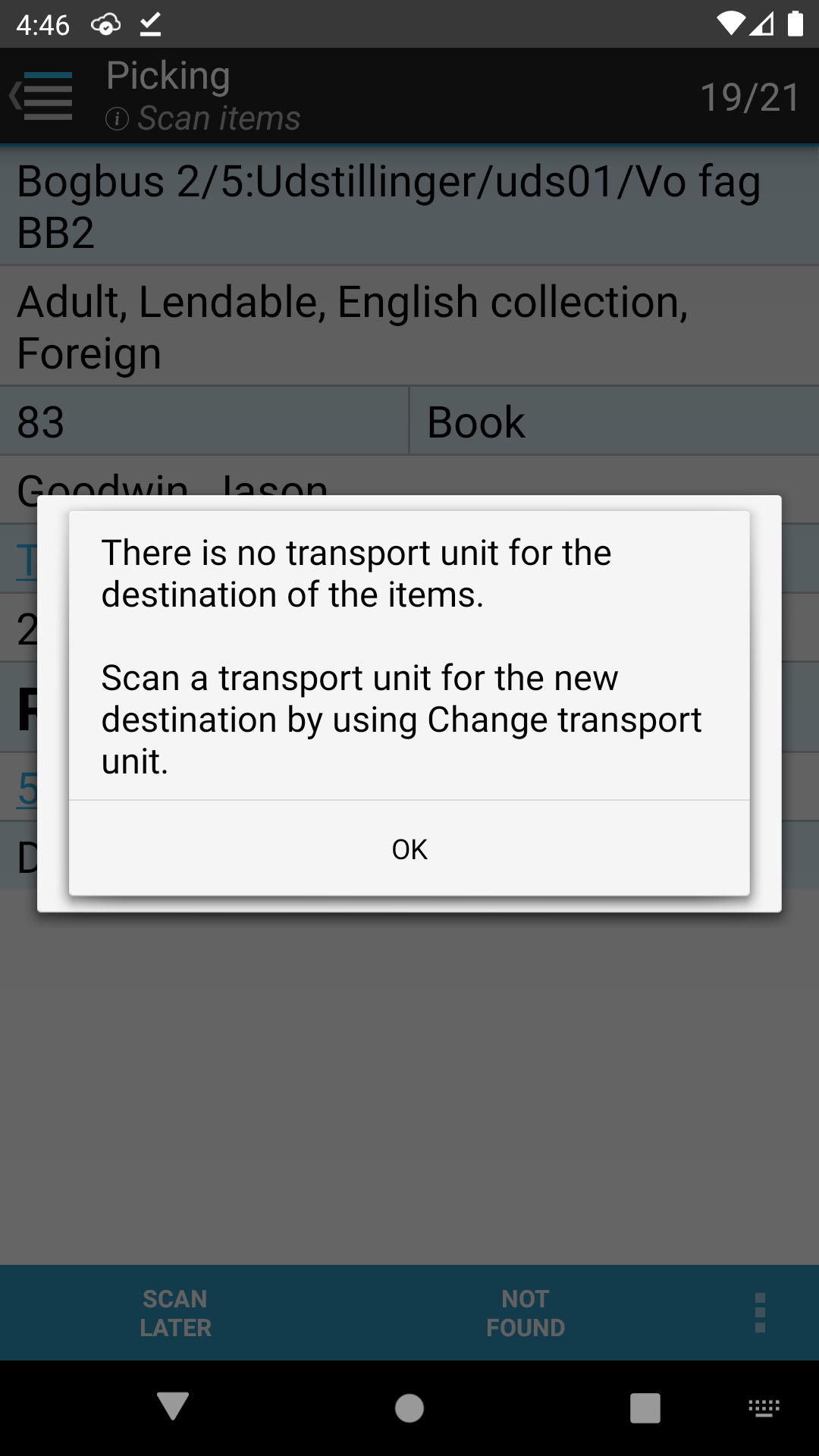
In compact view, you can see the details of an individual order by pressing your finger on an order for about a second. The detail window disappears when you click anywhere on the screen.
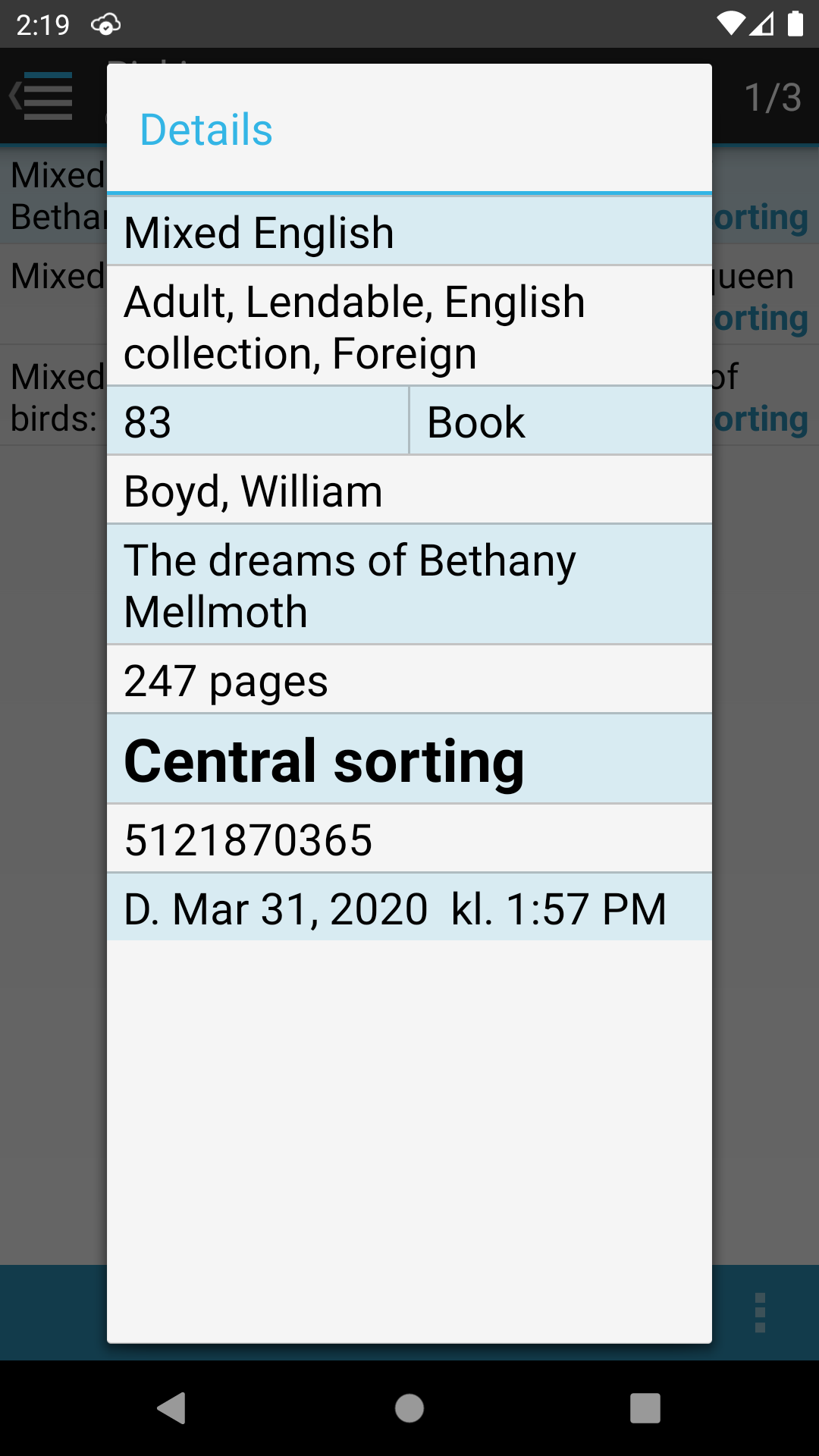
By clicking on the Item ID, the item’s history and details are displayed.
Here you can see where the item was previously located as well as the dates of the various placements.
The display of the item's history allows you to view the last 15 movements for an item.
On the details tab, information about the item, when it was created and how there is, can be viewed.
You can return to picking by clicking on the “Back” button.
If an item has multiple Item IDs, the ones associated with the applicable placement are displayed in bold.
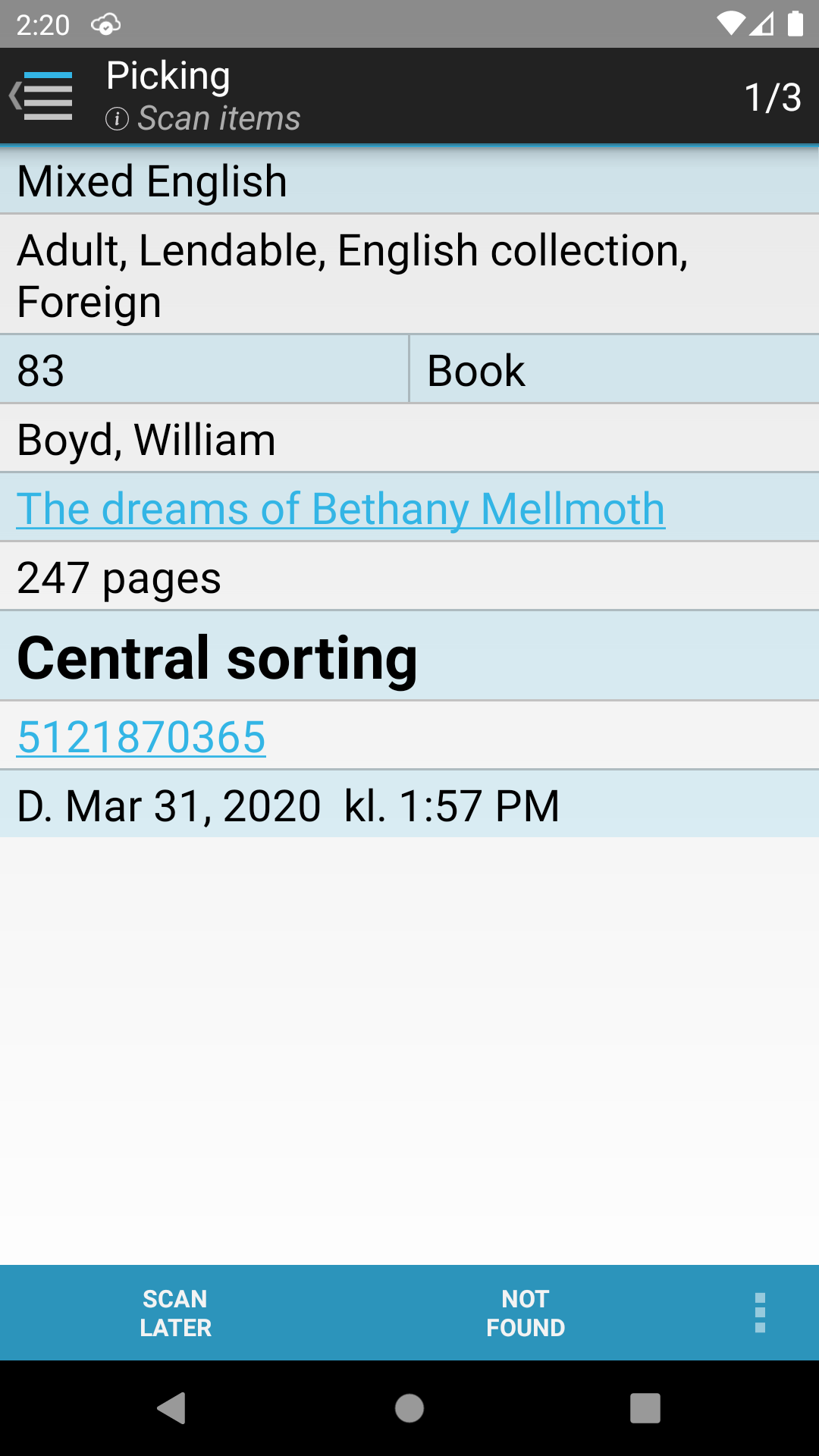

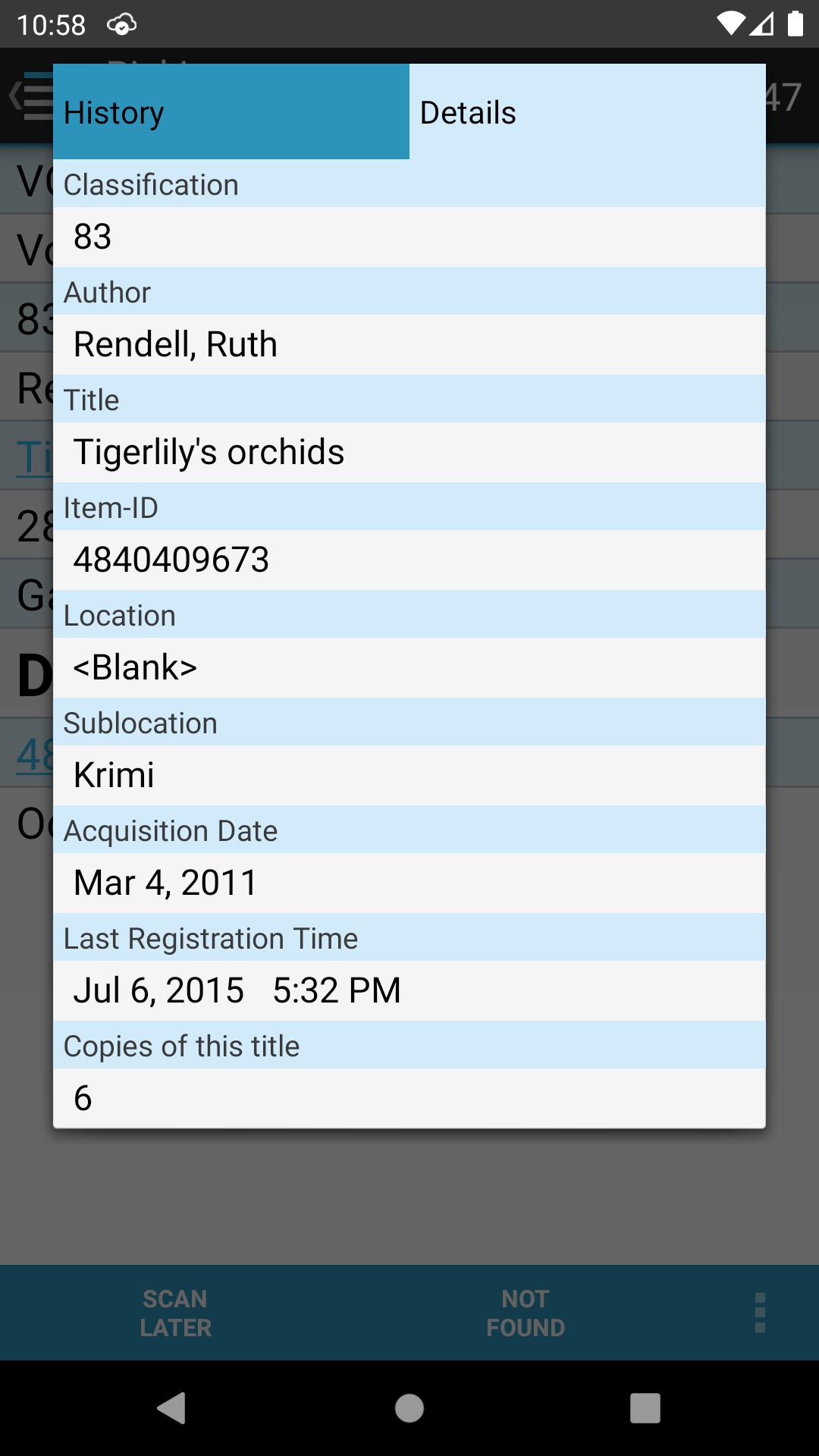
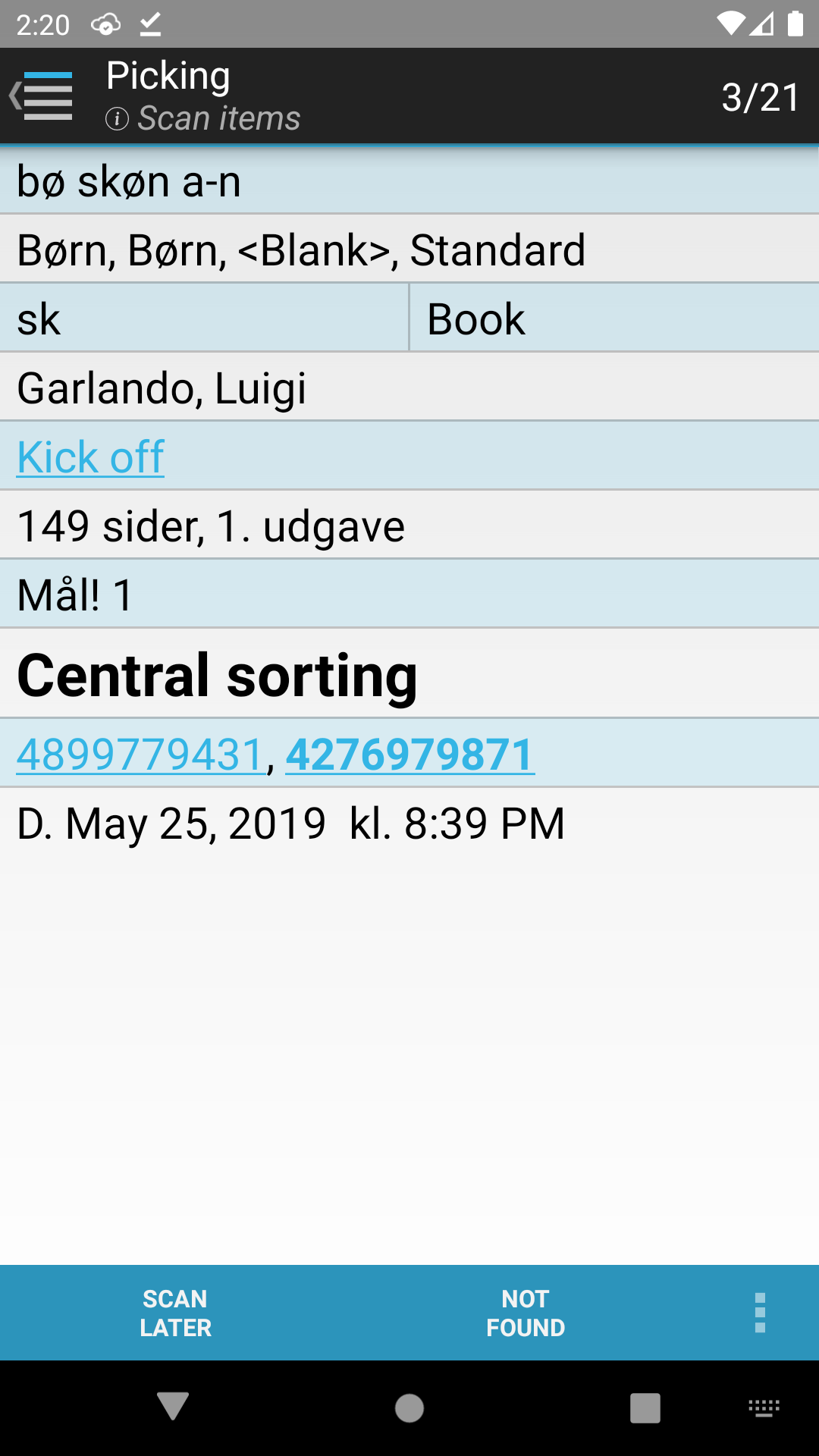
Clicking on an item’s title calls the front page service, and the title cover image will be displayed.
You can get rid of the image by clicking on or outside the image or by clicking the “Back” button.
If the front page service does not have an available image, then a dialog box is displayed.
